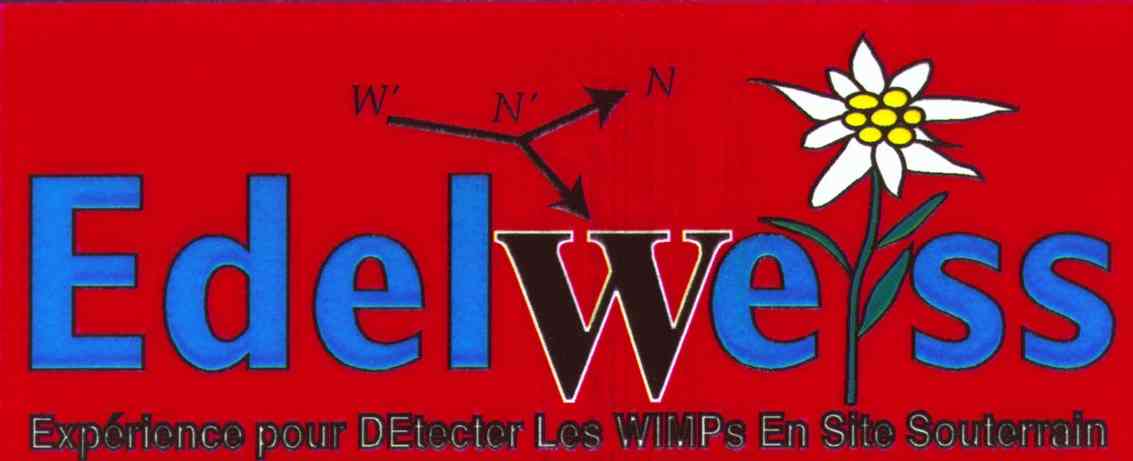This page’s menu:
Edelweiss-III: Experimental description
Crygogenic setup
All Edelweiss-III detectors are operated at ultra-low temperature, at around 20 milliKelvins. With the Edelweiss-III cryostat, such temperatures may be reached for a volume of 50 liters (around 40 detectors). The cryostat has a reversed geometry, enabling an easy access to the detectors.
The FID detectors
These are detectors developed for EDELWEISS-III, Germanium bolometers equipped with a set of "Full InterDigit" electrodes. Their working principle inherits from previous detector generations:
- Ge-NTD detectors: detectors used during the phase I of the experiment. These bolometers are made of 300-grams germanium monocristals. The interaction of a WIMP with these cristals generates a nuclear recoil with a typical recoil energy from a few keV to few tens of keV. This recoil is measured at the same time with a heat channel (the temperature increases by about a millionth of degree), and an ionization channel. The energy threshold reaches 10 keV. The simultaneous heat-ionization measurement enables to discriminate the nuclear recoils from electronic recoils associated to the residual gamma radioactivity, with a rejection factor larger thabn 99,9%.
- InterDigit detectors. These are second generation detectors designed in order to get rid of the problem of surface events encountered with standard NTD detectors: the residual beta radioactivity generates interactions at the very surface of the detectors which cannot be discriminated against WIMPs with a simple heat-ionization measurement.
The Interdigit detectors use comb-like electrodes (interdigitized) which allow to discriminate surface interactions thanks to the measurement of ionization signals (the electric field geometry is modified at the surface by those electrodes).
- The FID - Full InterDigit - detectors work according to the same principle as InterDigit bolometers, but crystals have a mass of 800 grams and were equipped with interdigitized electrodes on their whole surface, including the edges of the cylinder. Overall, the effective mass useful for WIMP search of a single detector is 600 grams, instead of 160g for previous generation detectors. The background rejection performances were also improved.
Shieldings and veto
In order to reduce the background of radioactivity which could be confused with WIMP interactions, several active and passive protections are implemented. First, a lead shield of 15 cm width reduces the gamma radioactivity. Near the detectors, some archeological lead is used: this lead comes from a roman wreck of the IVth century and its 210Pb radioactivity is now negligeable. A paraffine shielding of 30 cm thick slows down fast neutrons. Then scintillating plates are used as vetos against the residual muon flux. Finally, 1700m of rock shield the whole laboratory against cosmic rays from the atmosphere.
Furthermore, all materials used in the construction of detectors and their near environment were strictly selected thanks to a dedicated gamma-ray spectrometer at the LSM.
 Edelweiss-III
Edelweiss-III